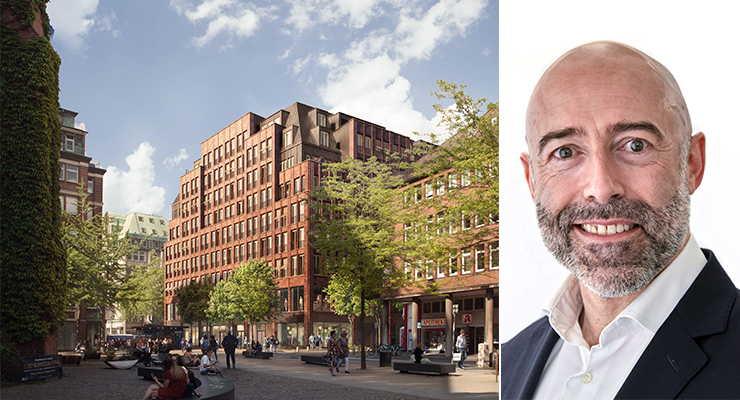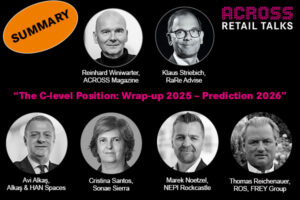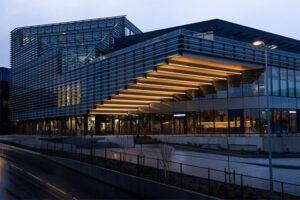By Chris Fleetwood
The COVID-19 pandemic accelerated the digital transformation that was already underway, and leading brands understand the impact and benefits of investing in technological innovation to enhance the customer experience of retail spaces. Retail is now less “transactional” in nature and much more “experiential”.
Retailers have to listen to consumer feedback and harness data analytics. A seamless and holistic experience between physical and digital (phygital) is essential for the customer journey. It’s not just about stacking shelves and selling products, it’s about brand connection with people – the experiential interaction and the strength of the relationship between consumers and brands that bring people back time after time, while also generating those very important “recommendations” to others.
Brands want to understand customer engagement with the enhanced environments and how that can drive long-term loyalty. So, “experience per square meter” might be measured in terms of “dwell times” or “customer lifetime value” in addition to the traditional key metric of sales per square meter.
Technological advances, such as 3D cameras, which measure footfall and dwell time hotspots and are supported by artificial intelligence mean the measurement of “experience metrics” is increasing and becoming more accurate. There are QR codes that capture interactions with specific items and social media monitoring that tracks customer sentiment about products, as well as mentions by particular “influencers”.
Smart shelf displays with AI-enabled sensors can detect when goods are picked up and provide feedback to retailers in real time, while smartphone technology can detect when people are wandering through mixed-use or retail spaces and send messages directly to their phones. It’s all about the hyper-personalization of retail spaces, which enables brands to really understand who their customers are and what they want.
Redevco Targets Mixed-Use Urban Transformations With €1 Bn In Investments
Redevco is uniquely positioned as one of Western Europe’s biggest owners of High Street properties to support our tenants in adapting to the ongoing “secular shift” in retail markets. Our role is to develop and maintain environments that allow brands to thrive, generating mixed-use experiences that are increasingly defining the character of retail in major cities across Europe and support what our occupiers are trying to create themselves.
Redevco has embarked on a €1 billion pan-European investment program for the coming years, focused primarily on retail assets in urban centers to curate dynamic 24/7 destinations that are more embedded in the rapidly evolving demands of the communities in which they are located. This can range from a greater proportion of restaurants, hotels, sports and wellness venues, and other commercial or community uses in redevelopment schemes, to major residential components that can contribute to tackling Europe’s severe shortage of housing.
We are also applying a similar formula to some of our retail warehouse parks, which are emerging as potential mixed-use new neighborhood hubs, as expanding cities absorb these previously urban peripheries and populations and businesses follow.
With Redevco currently considering the redevelopment of up to 40 potential projects, this will be one of Europe’s most ambitious urban transformation programs by a single asset manager. It is striking to see how much the pure retail component will be reduced within our larger redevelopments, indicating a move to more mixed-use schemes providing a more diversified income stream for our clients. This indicates the “win-win” nature of these schemes for owners and retailers when we successfully cultivate a new Zeitgeist, or spirit, for a previously “tired” location.
For example, the gross leasable retail area of our Elisen Palais project in the heart of Hamburg – where Redevco is redeveloping a former C&A retail store into a highly sustainable mixed-use property – will be cut by about 70%. Other uses, in this case two hotels with different concepts, occupy the former retail space.
Similarly in our Rue De Rivoli redevelopment in central Paris, our ten-story building initially closed on itself with its limited opening hours for its shops and offices will be totally transformed into a mixeduse product with a fully opened façade and public access to a unique rooftop. Indeed, the retail GLA will fall by more than half, three floors will be given over to offices and there will be an urban logistics function. A lifestyle hotel and restaurant all nestling under an extensive rooftop garden with 360-degree views of Paris, while there is significant retailer interest in the lower floors. We are creating an environment that is connected both horizontally and vertically with the other uses in the building, so it becomes an ecosystem within itself, as well as an integral part of the surrounding retail and commercial area but also of the whole district activities.
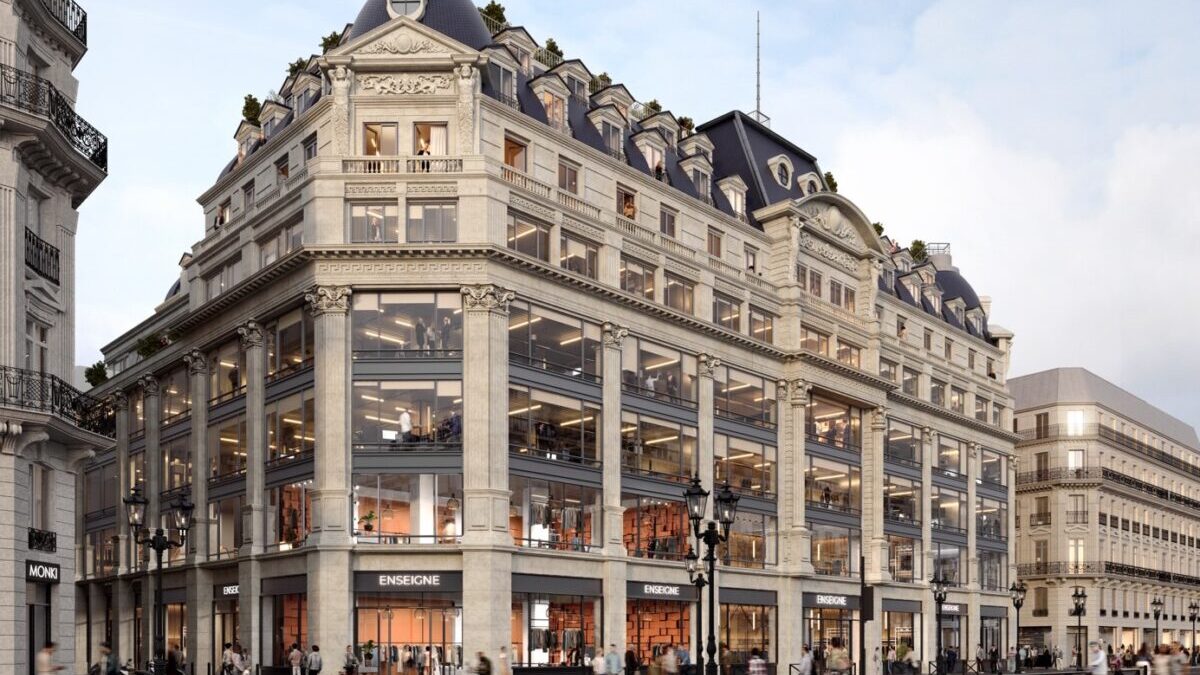
Within our portfolio, we often change a very big building with one key tenant to one with multiple operators. At the same time, we also see that some retailers such as Zara, Primark, and Frasers now want to have bigger spaces than previously, to create a more engaging full-on brand destination experience.
In Madrid, Primark has recently opened a large flagship store at a Redevco property that was formerly an art déco theater, then cinema, dating back to the 1930s, on Calle del Conde de Peñalver. Original interior elements of this listed heritage building have been maintained, and the store’s collection has been presented in a luxurious way to match the sumptuous theatrical and cinematographic surroundings. The skillful blending of past historic use with a modern cutting-edge retail experience is exemplified by the large digital advertising screen that sits where movies used to be projected.
As an innovative asset manager, Redevco proposes a new way to use our commercial spaces. The goal is to allow brands, associations, event agencies and local communities to promote their products, services and values in a flexible space. The concept “Stories by Redevco” transforms what we call ‘meanwhile spaces’ into a media channel on a short-term basis – from a couple of days to several weeks. The concept is deployed in vacant units but also in spaces under redevelopment. This tends to be a collaboration between us and the marketing departments and event agencies rather than only property or development teams of brands. Recent successes have included working with the brands such as Nike, Dries Van Noten, and Comme des Garcons.
Immersive Experiences Of The Senses Drive Retail Success
A number of retail operators that had been pure online players have seen the advantage of going into physical stores, which has complemented the success they’ve experienced in e-commerce. Survey after survey has shown that people want an experience to be part of their shopping journey, particularly the Gen Z cohort, who are digital natives and the largest emerging group of future consumers and prefer “experience” over “things”. Sensory-rich environments can include augmented reality, virtual reality, interactive displays, and scent marketing. Even if the purchase ultimately takes place online, people still like the sensory experience of going into a store to touch and feel and smell. So, it’s about the merging of sales points with a holistic approach and the ability to have smooth and seamless interactions and transactions with customers no matter how the purchase is made.
The UK’s Gymshark, a retailer of athletic apparel, is a great example of harnessing an online platform and social media and, ultimately, a physical store to create an all-round experience that has driven growth in the brand over a relatively short period of time.
Gymshark, founded in 2012, was historically purely online, with the occasional “pop-up” shop. They brought brand ambassador athletes onboard to support their advertising and created a very loyal following. When they opened a store on London’s Regent Street in 2022, it wasn’t just about selling, it was a place for their community to experience the DNA of Gymshark. They created a hub for podcasts and workshops, together with personal trainers, classes every week, a “Run Club”, a healthy snack bar, and wellness advisors to successfully build greater brand awareness.
People tend to remember experiences better than they remember information and facts. So, if you’re creating experiences that stick in the mind, they will be key to the success of your business, whether you’re a retailer or a real estate asset manager.
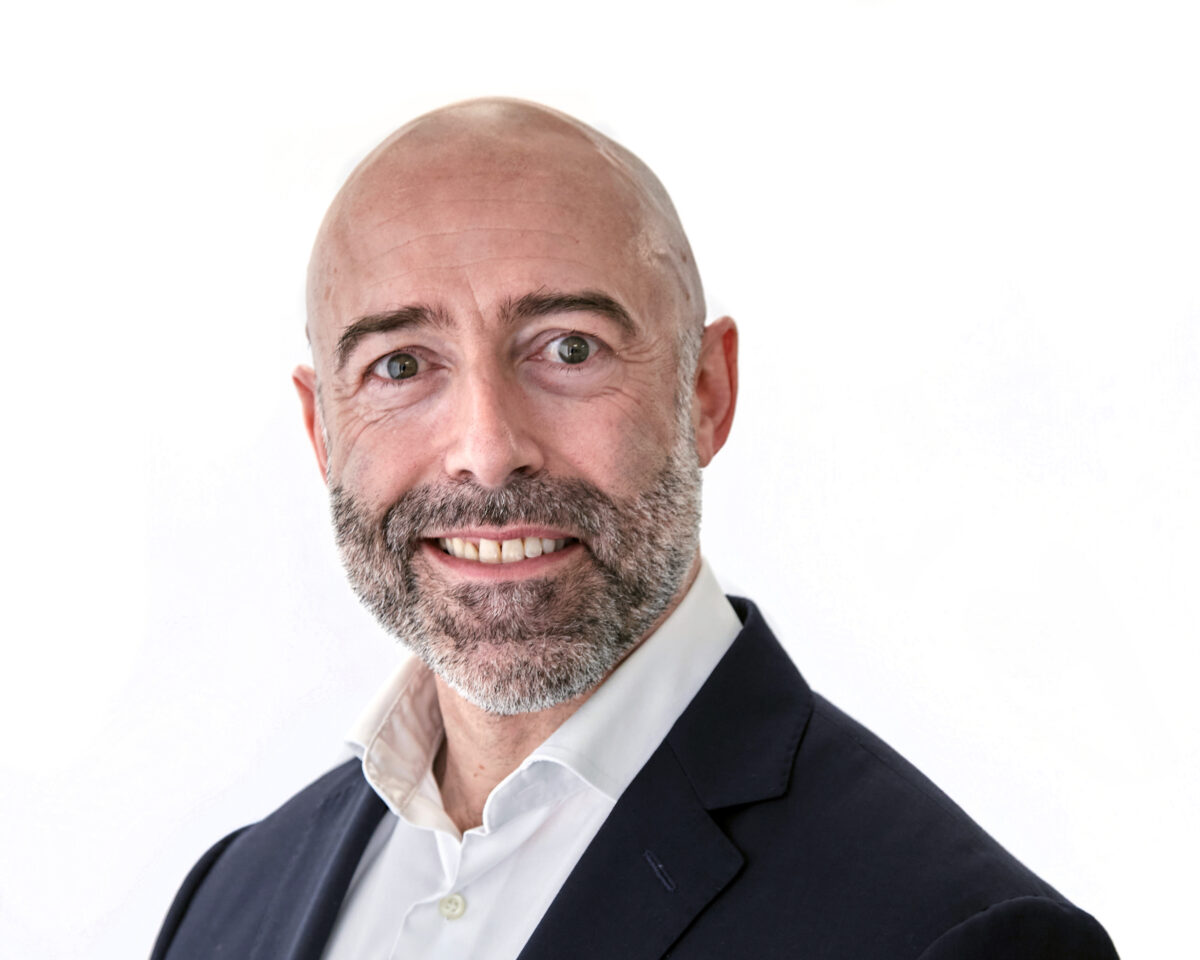
Chris Fleetwood
Chris Fleetwood is the Deputy COO Real Estate at Redevco.
